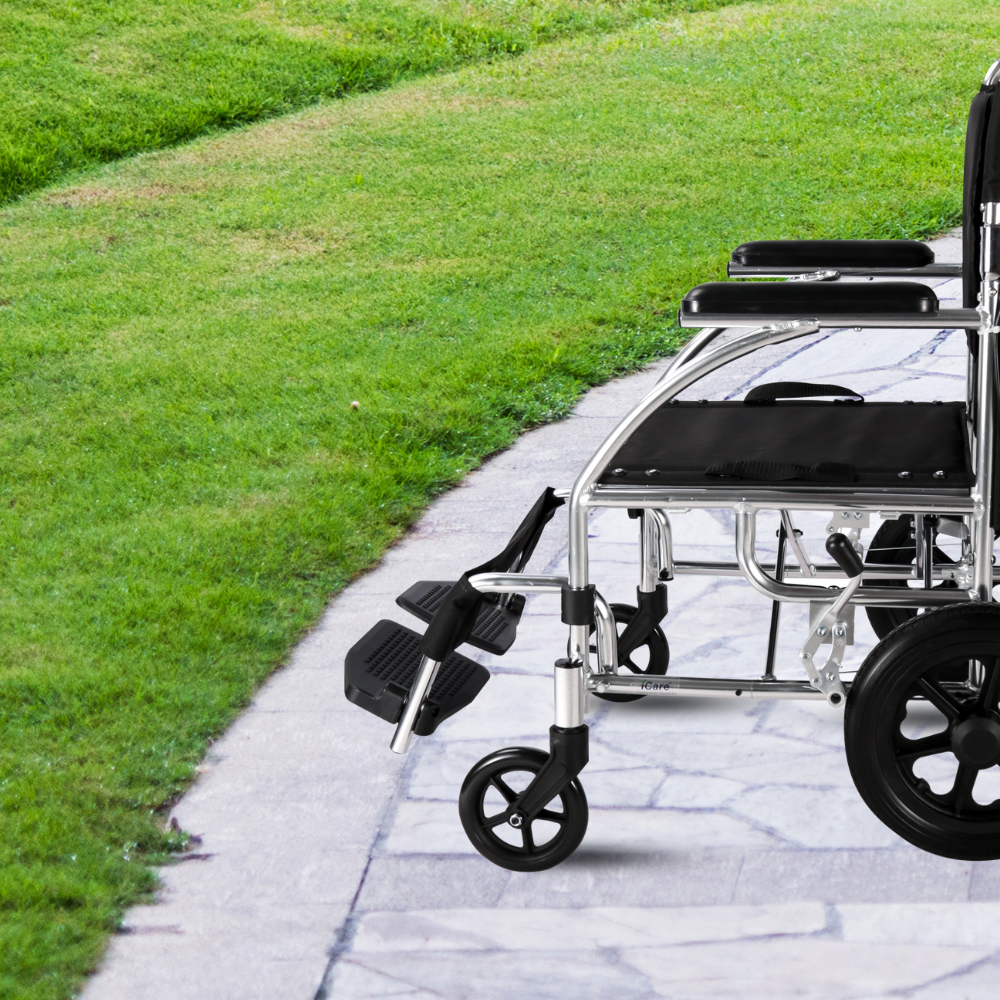-
Leg rest Adjustment
For optimum comfort it is important to attain the correct leg position. To adjust, use the tool provided to loosen the bolt at the side of the footrest arm. Adjust it to the desired height, re-tighten the screw and make sure the footplate is firm. Then tighten the nut as a knockout from outside.
-
Folding the Wheelchair
To fold the chair, ensure that the footrests are in forward position and that the plastic footplates are flipped up. Pull up the seat upholstery by holding its central portion of the front and rear ends. The wheelchair will naturally fold up.
-
Transporting the wheelchair
To transport the wheelchair, first fold up the wheelchair as previously described. This wheelchair can be used for transport in vehicles that have been specially adapted for this purpose.
-
Using the Stepper Tube
Use the stepper tube to raise the front castors (when mounting a curve for example).
To mount a curve. Approach the curve head on. Then the attendant uses the stepper tube to raise the front castors, and lowers the front castors on the raised curve. Finally, the attendant should push the wheelchair forward, lifting it up slightly to mount the curve if required.
To go down a curve. Line up the front castors with the edge of the curve. The attendant uses the stepper tube to raise the front castors and tip the user slightly back. Keeping the castors raised, slowly lower the wheelchair down the curve.
-
Operation and Propulsion
The wheelchair can be propelled by the wheelchair user using the rear wheel hand rims or by an attendant using the push handles.
-
To apply the parking brakes, push the plastic brake handle towards the front of the wheelchair. Push the handle back to release the brakes or use the hand brakes. The brakes should be used as parking brakes when the wheelchair is stationary. Apply reverse pressure to hand rims or push handles to slow the wheelchair during operation.
-
Use slow speeds on gradients. Do not use on gradients larger than degree.
-
The wheelchair is only suitable for single occupancy.
-
The wheelchair user should keep their feet on the footplates when moving. Do not stand on the footplates.
-
Do not use escalators.
-
Maintain proper balance at all times. Users should not move their center of gravity out of the seating area.
-
Do not reach for items further than your arm will extend.
-
Be aware of hazards in your environment, such as narrow doorways, steps, household appliances, children’s toys, etc.
-
We recommend you consult your healthcare professional for advice about transferring to and from the wheelchair. The parking brakes should always be applied when transferring.
-
The wheelchair brakes are parking brakes and are not suitable for slowing the wheelchair down.
-
Maintenance Tips
Proper care and maintenance are important in order to keep our wheelchair in good working order.
-
At least once a week, wipe down the frame using a clean, soft cloth. If the chair is exposed to moisture, dry the chair immediately. The metal parts of the chair should be polished once a month with an auto wax.
-
Clean the upholstery with a mild soap solution, rinse and wipe dry. Worn or torn upholstery should be replaced promptly as it may not support your body weight.
-
Inspect the wheels at least once a month. Correct any side play by loosening the lock nut on the axle then tighten the axle just enough to remove any play.
-
Solid rubber tyres require limited upkeep, but need to be cleaned periodically with a damp cloth. Solid rubber tyres need to be replaced if they become cracked or severely worn.











